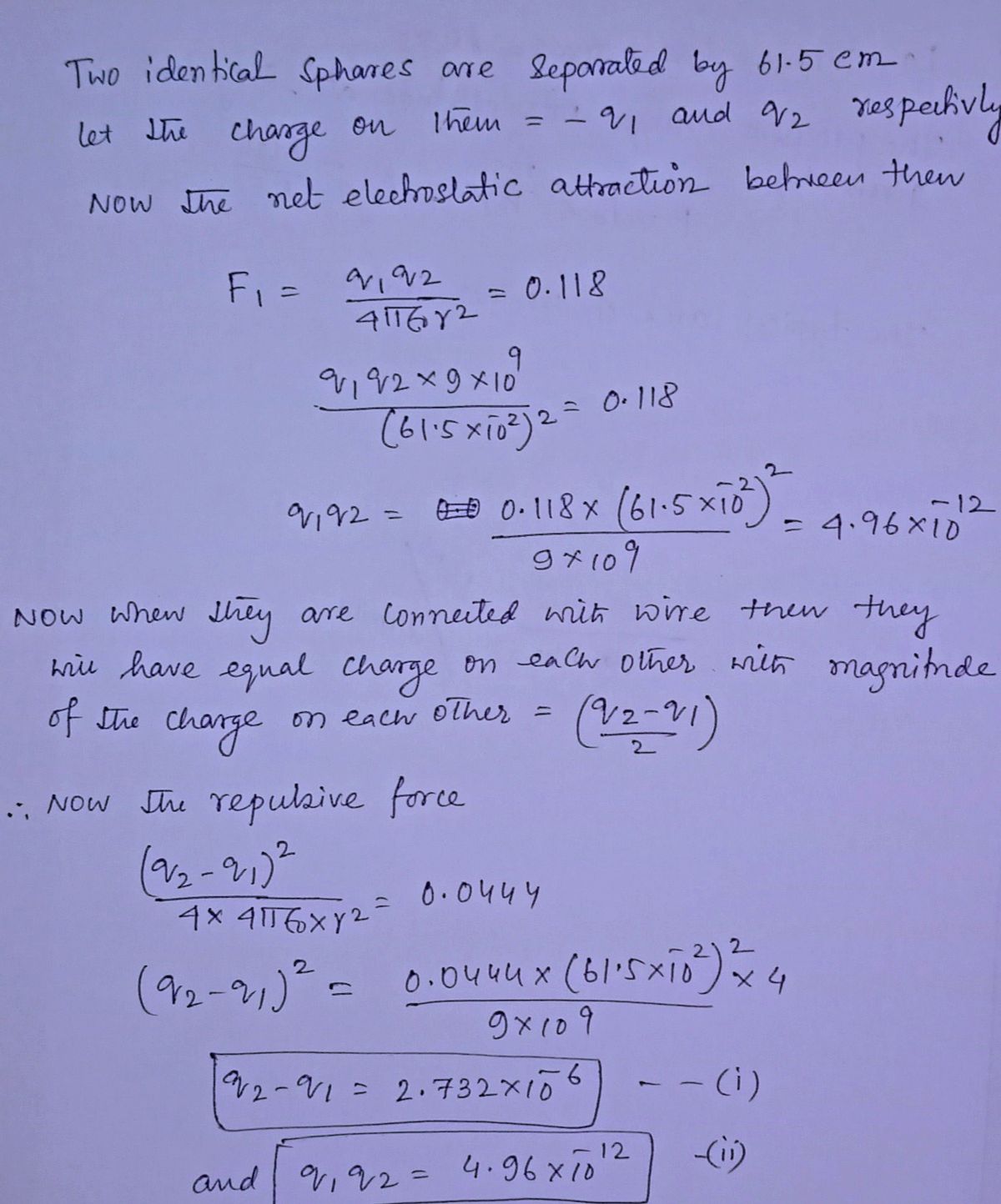Two identical conducting spheres, fixed in place, attract each other with an electrostatic force of 0.118 N when their center-to-center separation is 61.5 cm. The spheres are then connected by a thin conducting wire. When the wire is removed, the spheres repel each other with an electrostatic force of 0.0444 N. Of the initial charges on the spheres, with a positive net charge, what was (a) the negative charge on one of them and (b) the positive charge on the other? (Assume the negative charge has smaller magnitude.)
Two identical conducting spheres, fixed in place, attract each other with an electrostatic force of 0.118 N when their center-to-center separation is 61.5 cm. The spheres are then connected by a thin conducting wire. When the wire is removed, the spheres repel each other with an electrostatic force of 0.0444 N. Of the initial charges on the spheres, with a positive net charge, what was (a) the negative charge on one of them and (b) the positive charge on the other? (Assume the negative charge has smaller magnitude.)
Related questions
Question

Transcribed Image Text:Two identical conducting spheres, fixed in place, attract each other with an electrostatic force of 0.118 N when their center-to-center
separation is 61.5 cm. The spheres are then connected by a thin conducting wire. When the wire is removed, the spheres repel each
other with an electrostatic force of 0.0444 N. Of the initial charges on the spheres, with a positive net charge, what was (a) the
negative charge on one of them and (b) the positive charge on the other? (Assume the negative charge has smaller magnitude.)
Expert Solution
Step 1: Step 1

Step by step
Solved in 3 steps with 2 images
